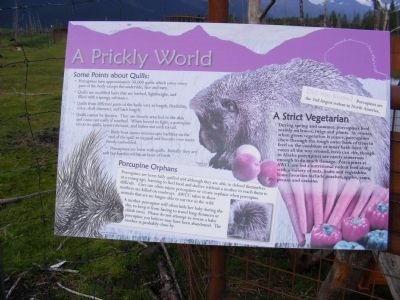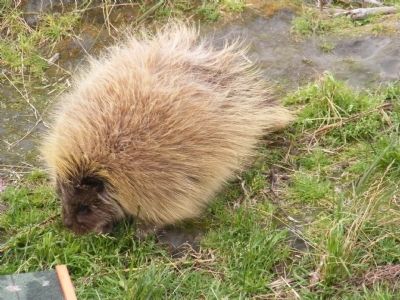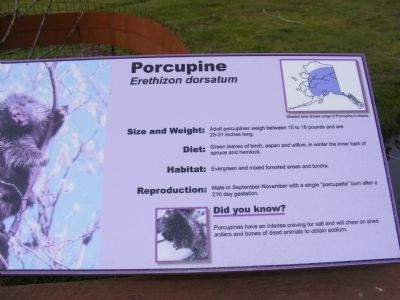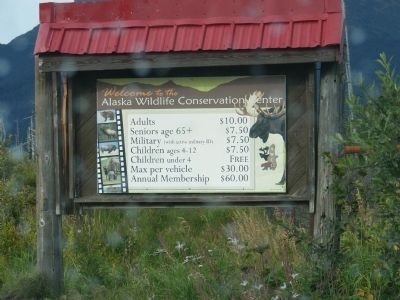Anchorage, Alaska — Northwest (North America)
A Prickly World
Alaska Wildlife Conservation Center
Some Points about Quills:
*Porcupines have approximately 30,000 quills which cover every part of the body except the underside, face and ears.
*Quills are modified hairs that are barbed, lightweight, and filled with spongy substance.
*Quills from different parts of the body vary in length, flexibility, color shaft diameter, and barb length.
*Quills cannot be thrown. They are loosely attached to the skin and come out easily if touched. When forced to fight, a porcupine erects its quills, lowers its head, and lashes out with its tail.
*Body heat causes microscopic barblets on the end of the quill to expand and become ever more firmly embedded.
*Porcupines are born with quills. Initially they are soft but harden within an hour of birth.
Porcupine Orphans
Porcupines are born fully quilled and although they are able to defend themselves at a young age, learning to find food and shelter without a mother to teach them is difficult. Cars can often injure porcupines or create orphans when porcupine mothers are killed on roadways. AWCC takes in these animals that are no longer able to survive in the wild. A mother porcupine will often hide her baby during the day, to keep it from having to travel long distances or climb trees. Please do not attempt to rescue a baby porcupine you believe may have been abandoned. The mother is probably close by.
Did you know?
Porcupines are the 2nd largest rodent in North America.
A Strict Vegetarian
During spring and summer, porcupines feed mainly on leaves, twigs and plants. In winter, when green vegetation is scarce, porcupines chew through the rough outer bark of trees to feed on the cambium or inner bark layer. If eaten all the way around, trees can die, though in Alaska porcupines are rarely numerous enough to do much damage. Porcupines at AWCC are fed a nutritional rodent feed along with a variety of nuts, fruits, and vegetables. Some favorites include peaches, apples, yams, pecans and craisins.
Topics. This historical marker is listed in this topic list: Animals.
Location. 60° 49.339′ N, 148° 59.026′ W. Marker is in Anchorage, Alaska. Marker is on Seward Highway. The marker is located on the grounds of the Alaska Wildlife Conservation Center. Touch for map. Marker is in this post office area: Girdwood AK 99587, United States of America. Touch for directions.
Other nearby markers. At least 6 other markers are within 5 miles of this marker, measured as the crow flies. Moose Calves (within shouting distance of this marker); Our Living National Symbol (about 300 feet away, measured in a direct line); Brown Bears of AWCC (about 500 feet away); 1964 Earthquake (approx. 0.2 miles away); Atlantic Salmon-A Threat to the Chugach National Forest? (approx. 4.3 miles away); Coho Salmon Life Cycle (approx. 4.3 miles away).
Credits. This page was last revised on April 13, 2021. It was originally submitted on December 11, 2013, by Don Morfe of Baltimore, Maryland. This page has been viewed 551 times since then and 17 times this year. Last updated on April 13, 2021, by Carl Gordon Moore Jr. of North East, Maryland. Photos: 1, 2, 3, 4. submitted on December 11, 2013, by Don Morfe of Baltimore, Maryland. • J. Makali Bruton was the editor who published this page.



